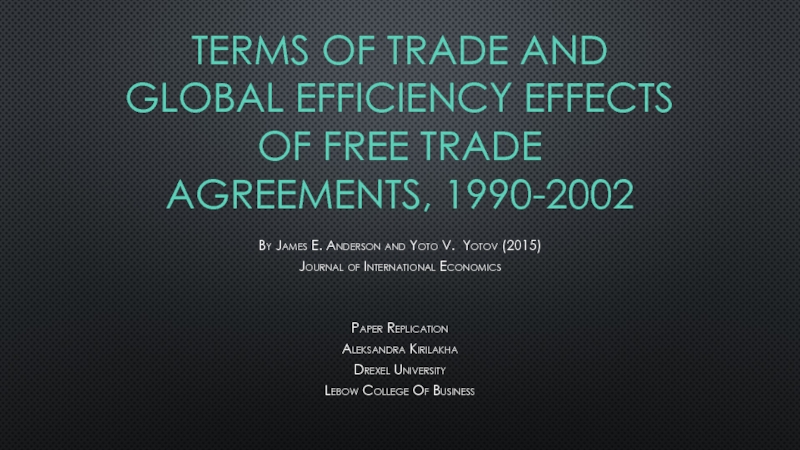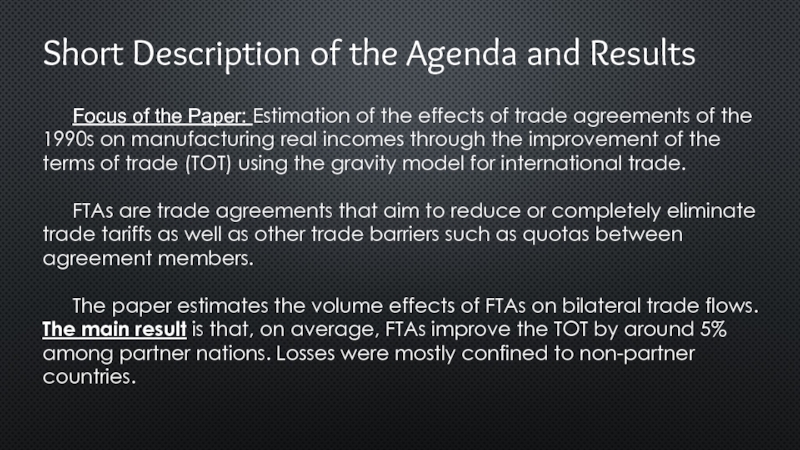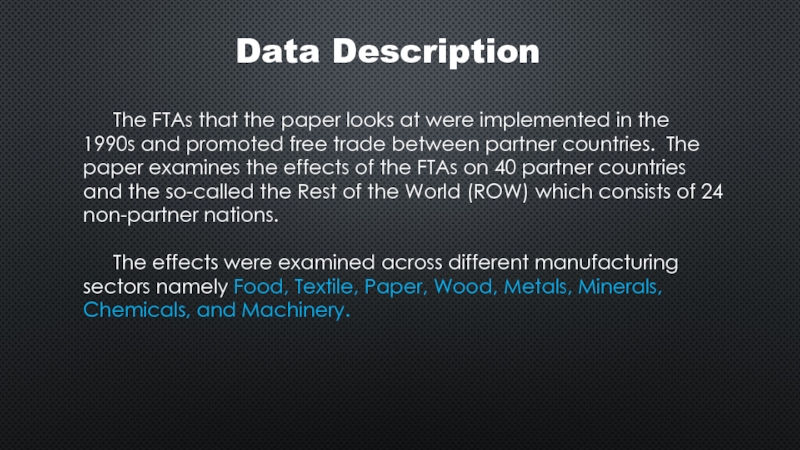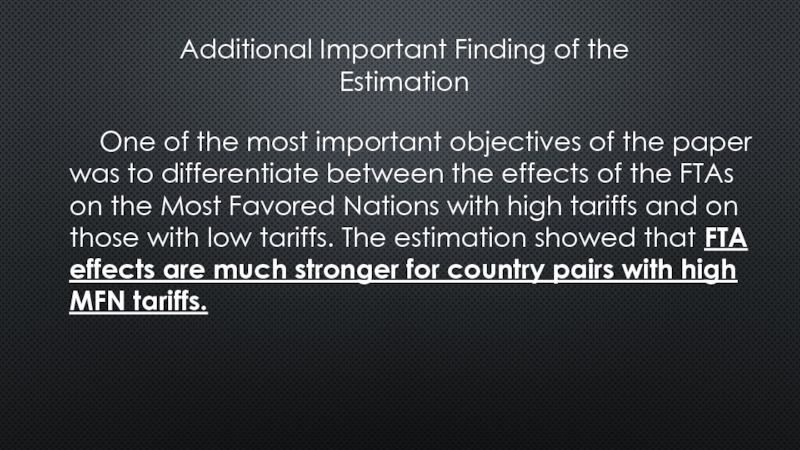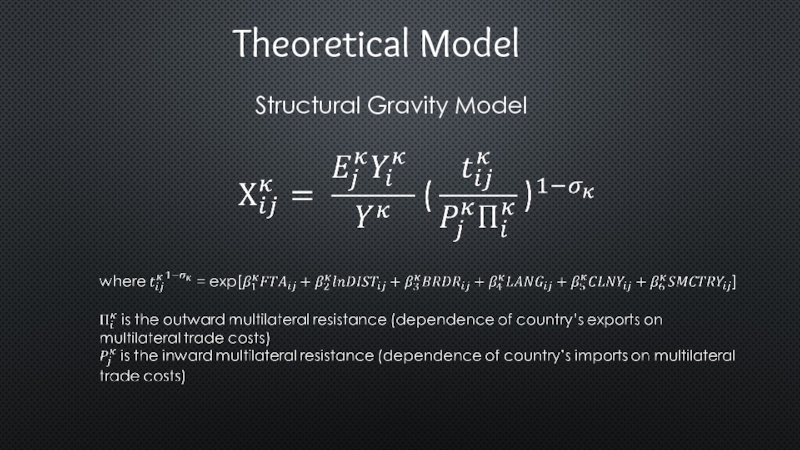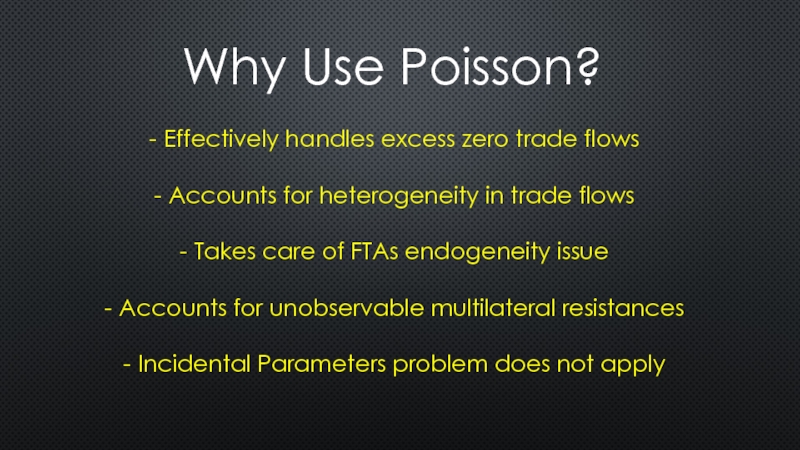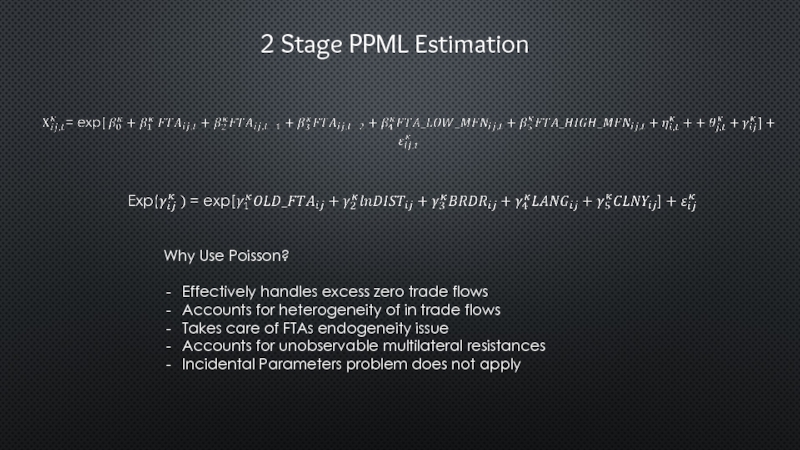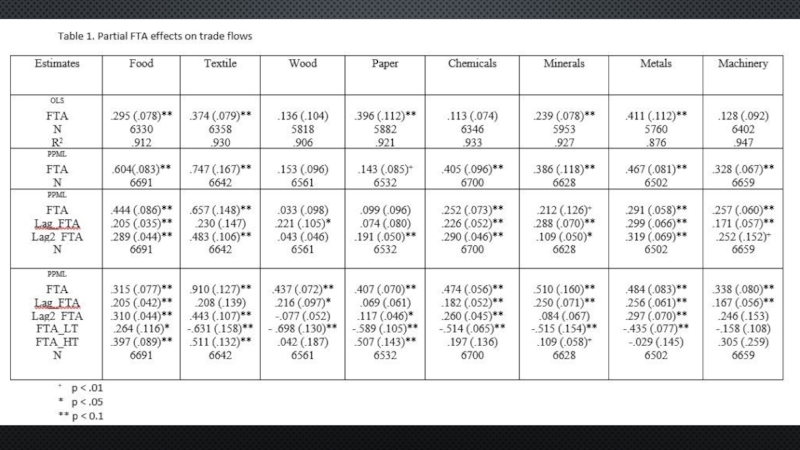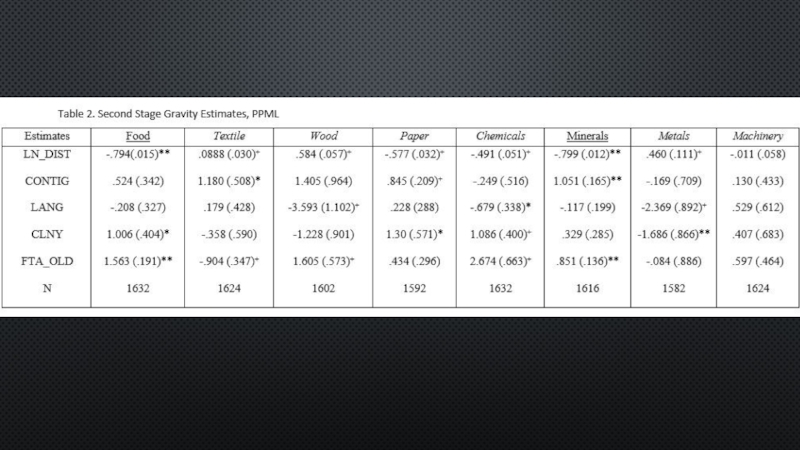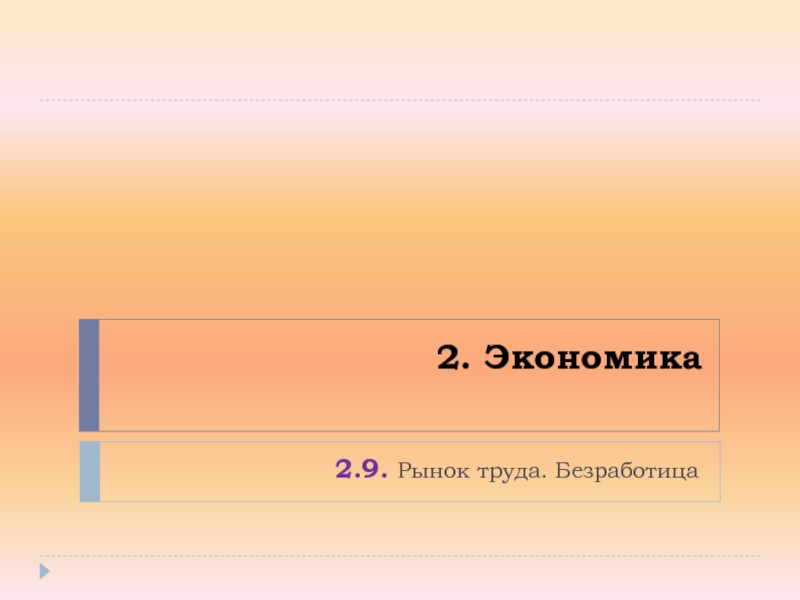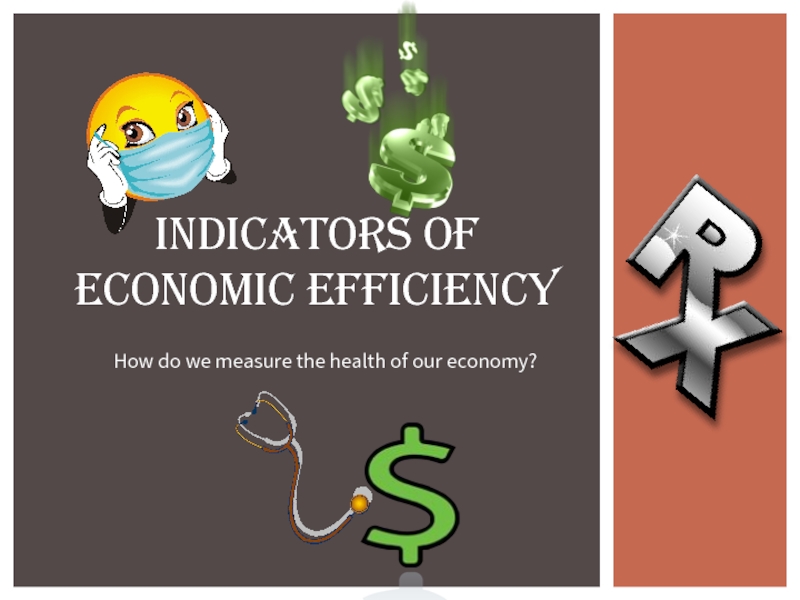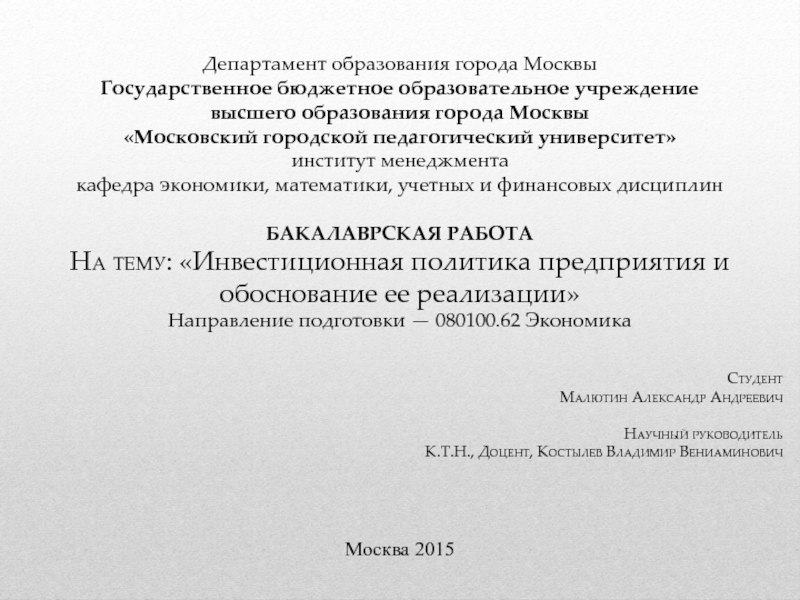By James E. Anderson and Yoto V. Yotov (2015)
Journal of International Economics
Paper Replication
Aleksandra Kirilakha
Drexel University
Lebow College Of Business
- Главная
- Разное
- Дизайн
- Бизнес и предпринимательство
- Аналитика
- Образование
- Развлечения
- Красота и здоровье
- Финансы
- Государство
- Путешествия
- Спорт
- Недвижимость
- Армия
- Графика
- Культурология
- Еда и кулинария
- Лингвистика
- Английский язык
- Астрономия
- Алгебра
- Биология
- География
- Детские презентации
- Информатика
- История
- Литература
- Маркетинг
- Математика
- Медицина
- Менеджмент
- Музыка
- МХК
- Немецкий язык
- ОБЖ
- Обществознание
- Окружающий мир
- Педагогика
- Русский язык
- Технология
- Физика
- Философия
- Химия
- Шаблоны, картинки для презентаций
- Экология
- Экономика
- Юриспруденция
Terms of Trade and Global Efficiency Effects of Free Trade Agreements презентация
Содержание
- 1. Terms of Trade and Global Efficiency Effects of Free Trade Agreements
- 2. Focus of the Paper: Estimation of the
- 3. The FTAs that the paper looks at
- 4. Additional Important Finding of the Estimation One
- 5. Theoretical Model Structural Gravity Model
- 6. Why Use Poisson? Effectively handles
- 7. 2 Stage PPML Estimation
Слайд 1TERMS OF TRADE AND GLOBAL EFFICIENCY EFFECTS OF FREE TRADE AGREEMENTS,
1990-2002
Слайд 2 Focus of the Paper: Estimation of the effects of trade agreements
of the 1990s on manufacturing real incomes through the improvement of the terms of trade (TOT) using the gravity model for international trade.
FTAs are trade agreements that aim to reduce or completely eliminate trade tariffs as well as other trade barriers such as quotas between agreement members.
The paper estimates the volume effects of FTAs on bilateral trade flows.
The main result is that, on average, FTAs improve the TOT by around 5% among partner nations. Losses were mostly confined to non-partner countries.
FTAs are trade agreements that aim to reduce or completely eliminate trade tariffs as well as other trade barriers such as quotas between agreement members.
The paper estimates the volume effects of FTAs on bilateral trade flows.
The main result is that, on average, FTAs improve the TOT by around 5% among partner nations. Losses were mostly confined to non-partner countries.
Short Description of the Agenda and Results
Слайд 3 The FTAs that the paper looks at were implemented in the
1990s and promoted free trade between partner countries. The paper examines the effects of the FTAs on 40 partner countries and the so-called the Rest of the World (ROW) which consists of 24 non-partner nations.
The effects were examined across different manufacturing sectors namely Food, Textile, Paper, Wood, Metals, Minerals, Chemicals, and Machinery.
The effects were examined across different manufacturing sectors namely Food, Textile, Paper, Wood, Metals, Minerals, Chemicals, and Machinery.
Data Description
Слайд 4Additional Important Finding of the Estimation
One of the most important objectives
of the paper was to differentiate between the effects of the FTAs on the Most Favored Nations with high tariffs and on those with low tariffs. The estimation showed that FTA effects are much stronger for country pairs with high MFN tariffs.
Слайд 6Why Use Poisson?
Effectively handles excess zero trade flows
Accounts for heterogeneity
in trade flows
Takes care of FTAs endogeneity issue
Accounts for unobservable multilateral resistances
Incidental Parameters problem does not apply
Takes care of FTAs endogeneity issue
Accounts for unobservable multilateral resistances
Incidental Parameters problem does not apply
Слайд 72 Stage PPML Estimation
Why Use Poisson?
Effectively handles excess zero trade
flows
Accounts for heterogeneity of in trade flows
Takes care of FTAs endogeneity issue
Accounts for unobservable multilateral resistances
Incidental Parameters problem does not apply
Accounts for heterogeneity of in trade flows
Takes care of FTAs endogeneity issue
Accounts for unobservable multilateral resistances
Incidental Parameters problem does not apply
